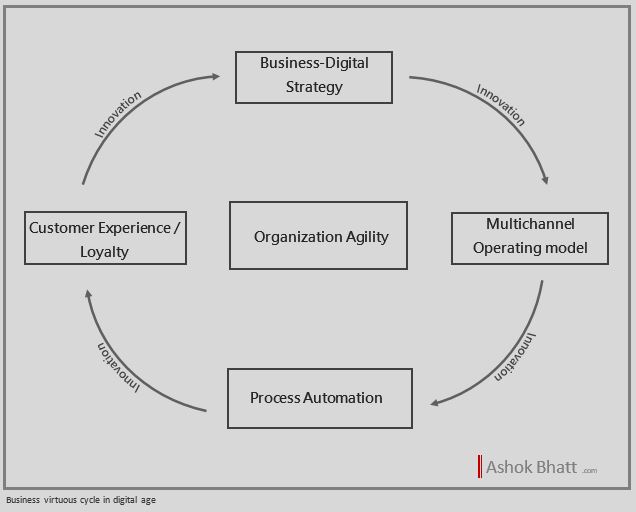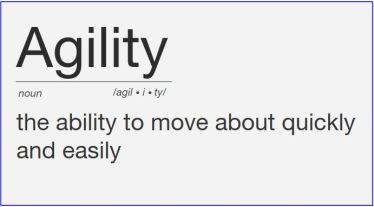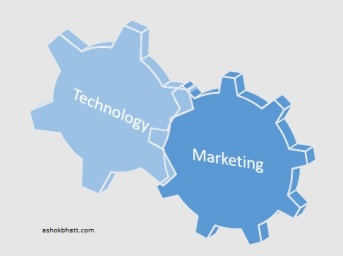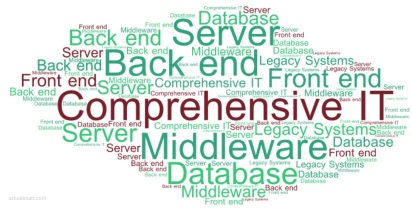
Have your say: ashok.bhatt@freshwaters.co

Have your say: ashok.bhatt@freshwaters.co
Digital is disrupting all the aspects of the business. Companies can now engage consumers in a meaningful conversation. Moreover, digital has made transactions and other related processes more transparent. Oh wait – there is more. One of the biggest impact of digital is that it has lowered the barriers to entry. As a result, startups and companies with nimble operating models have threatened established business models and have radically addressed consumers’ unmet demands.
All these have forced established companies to launch digital transformation with an ultimate goal to improve performance. However, before a company launch a digital transformation, it must clearly define whether it is planning a change management initiative or a digital transformation. Change management deals with incremental change s that make the same thing better, efficient, or faster. In contrast, transformation deals with fundamentally changing the way of thinking and working. In transformation you are greatly changing a company’s strategy, its culture, organization design, and the way of doing things.
s that make the same thing better, efficient, or faster. In contrast, transformation deals with fundamentally changing the way of thinking and working. In transformation you are greatly changing a company’s strategy, its culture, organization design, and the way of doing things.
Digital transformation begins with integrated business-digital strategy and digital roadmap. To bring out a successful digital transformation you should focus on three critical questions:
One thing you need to remember is that these questions don’t weigh equally and their answers vary by your industry, adjacency, competitors, and your company’s vision. Also, you must identify clearly defined targets of success and leading KPI to keep the transformation on track.
Have your say: ashok.bhatt@freshwaters.co
New technology innovations have empowered start-ups, and changed customers’ behaviors and expectation. These developments have changed the market dynamics in a big way. As a result, traditional ways of competitive advantages are waning at much quicker pace than ever before.

Since majority of the recent market shifts are induced by new technologies, and technology is associated with speed – one of the prerequisite to sustain growth in this digital era is to make organization agile. Agile organization could adapt to changing market condition rapidly and respond to customer demands timely.
Established companies can take advantage of their IT function’s agile model to scale it. However, there is more to it when it comes to agility across the organization. Based on my experience, a company should address three crucial elements to bring about agility and flexibility:
First two elements have to do with how people in a company interact with each other and make decisions, and the last one deals with series of actions to accomplish an outcome. The best levers to begin the agility is streamlining seams across functions or business-units where information is shared. Furthermore, if governance and competencies are properly leveraged that could bring changes in behaviors which eventually produce lasting improvements.
Have your say: ashok.bhatt@freshwaters.co
Before big data and analytics, marketers especially Chief Marketing Officers’ (CMO) decision making process and way of working was quite different. Their thinking and ideas were more based on historical data and lagging indicators. They had to wait for weeks if not months to see any results of a campaign or media-mix adjustments.
After digital disruption and emergence of mobile devices, 24/7 connectivity became an integral part of people’s life. Technology has empowered consumers and new buying behaviors are developing and shaping the market dynamics faster than ever. Consumer s’ browsing and use of social technology generate plethora of data, and every day new data footprints get appended to the older one. This phenomenon has expanded CMOs scope by adding technology to the traditional arsenal of brand management and creativity. CMOs and their teams should use this great opportunity to crunch structured and unstructured data and deduce meaningful patterns of it. Currently, in 2014, data management is in a state where CMO can target consumers and tailored messages at an individual level. Consequently, personalization and relevance are the name of the game. In my view three things will be in the CMOs agenda for the year 2015:
s’ browsing and use of social technology generate plethora of data, and every day new data footprints get appended to the older one. This phenomenon has expanded CMOs scope by adding technology to the traditional arsenal of brand management and creativity. CMOs and their teams should use this great opportunity to crunch structured and unstructured data and deduce meaningful patterns of it. Currently, in 2014, data management is in a state where CMO can target consumers and tailored messages at an individual level. Consequently, personalization and relevance are the name of the game. In my view three things will be in the CMOs agenda for the year 2015:
We are in the early stages of technology-marketing evolution. With new developments and evolving capabilities we will see a very diverse CMO role in the coming years.
Have your say: ashok.bhatt@freshwaters.co
Lately a concept has surfaced and it’s catching up fast in the consulting word. It’s about dividing technology function based on speed and operations. I am in agreement that companies need to have right mix of talent. Talent that can efficiently maintain legacy system and keep up with new technologies. However, the way this idea is positioned in the mind is wrong. By creating an imaginary line and dividing technology based on unreal preeminence criteria, we are needlessly creating silos within the same function. 
On the one hand we are emphasizing the need of an agile environment, but on the other hand we deliberately draw the line within the same function. This will defeat the very purpose of the agile environment – seamless collaboration with speed.
I think instead of dividing, the focus should be on developing and sustaining right talent with an emphasis on comprehensive technology. That way business leaders will send the message that they are committed to address both innovation and legacy challenges more efficiently and rapidly by addressing speed along with collaboration, simplification, and unification.
Have your say: ashok.bhatt@freshwaters.co
Tom is the Vice President of technology of a large Financial Services company. It’s the planning season, and he was in his office pondering on emerging technologies and how to make technology architecture more flexible and agile. He was in deep thought, and suddenly his phone rang, and Jane, a seasoned Vice President of technology for a different business unit, was on the phone on the other end. Jane said, “Tom, these emerging technologies, regulations, and empowered consumers are constantly reshaping market dynamics, and I think we need to talk about how to make our entire organization nimble to respond proactively to the changing market condition.” Tom replied, “Jane, great timing. I was thinking the same. However, I am unsure how to proceed as we are running through the big transformation.”
Tom told Jane that last night he went to a technology conference and met one of his colleagues from his alma mater, Ashok, who will help Tom give some pointers about how to make the organization nimble in the digital era. Tom asked Jane if she would like to join their meeting, and Jane was excited to learn and readily accepted the invitation.
Ashok, who was in an adjacent industry that was already disrupted a couple of years ago, now has rich experience in making organizations agile to compete with start-ups and nimble organizations.
The three were at a restaurant that evening. Tom and Jane explained their organization’s traditional planning process and asked Ashok what the best solution was to improve the situation. Ashok said the first thing you need to do is implement capability-driven planning. Both Jane and Tom responded, “what is capability-driven planning, and how will that help us”? Jane added, “we are going through many new changes, and people are busy with competing priorities, and if we ask them to add one more model or tool, that will add burden to already transformation-laden teams.” Ashok said, “Firstly, capability-driven planning is a strategic planning framework; and secondly, contrary to belief, it will not only make your organization strategic, adaptable, and agile, but it will also save you and your team many back-and-forth meetings and redos.”
Ashok said let me first tell you a bit about capability-driven planning. A capability tells you what a business does, not how it does it. A business capability defines the organization’s ability to perform a unique business activity successfully. Capabilities:
For example, an insurance company has many different capabilities, such as
These are your top-level (Level 1) capabilities, and now, the fun part begins. You start breaking down each capability to the next level. Capabilities can be decomposed, typically from levels 1-3 for planning purposes and levels 4-6 for detailed business-technology mapping. Tom and Jane listened as they all started taking bites of their delicious wood-oven pizza.
Ashok continues – Let me explain this by an example. For example, in the insurance industry, “Claim Processing” would be a Level 1 capability and could be broken down into
And, at Level 3, Claim Validation might be broken down into
Once you have created a capability model for your business, the respective business unit(s) will own that model. As the organization grows, it adds new capabilities to respond to the changing market situation. And your capability model has to be updated accordingly; therefore, it’s dynamic, not a one-time thing. Similar to business capability, you should create a technology capability model. Once you have completed your business and technology capability model, you are ready to map them for your planning process. And before Ashok could say anything, Jane asked, “what is a capability map?” Ashok replied, “a business capability map is a model that connects the business capabilities, processes, and services needed for success, with the IT resources that support them.”
Jane said, “I think one of our unit’s technology directors has already done the same thing, and that didn’t help us a lot.” Ashok said, “that’s your first problem – capability-driven planning is a top-down process, and it starts with the company’s leadership. To successfully implement it, you need visible leadership support.
Let me summarize this all with an example. Let’s say your organization wants to increase its revenue by 10% by improving customer experience and reducing claim processing time. This aspirational goal is not concrete enough for business and technology leaders to be broken down into informed decisions. But since you have robust capability-driven planning in place, you can identify the business capabilities impacted by this goal and then map it with the technology assets and data that support it. So, now your planning is more strategic, making your organization agile, and since you already know what technology capabilities will be impacted, you will prioritize your initiatives and reallocate scarce resources to strategic projects.
Ashok told them, “this whole capability planning is easier than you think.” Both Tom and Jane were excited that they could rely on a simple planning framework that Ashok explained to them, and they could implement it in the current planning cycle. All three agreed to meet one more time soon to share their experience and progress.
Have your say: ashok.bhatt@freshwaters.co